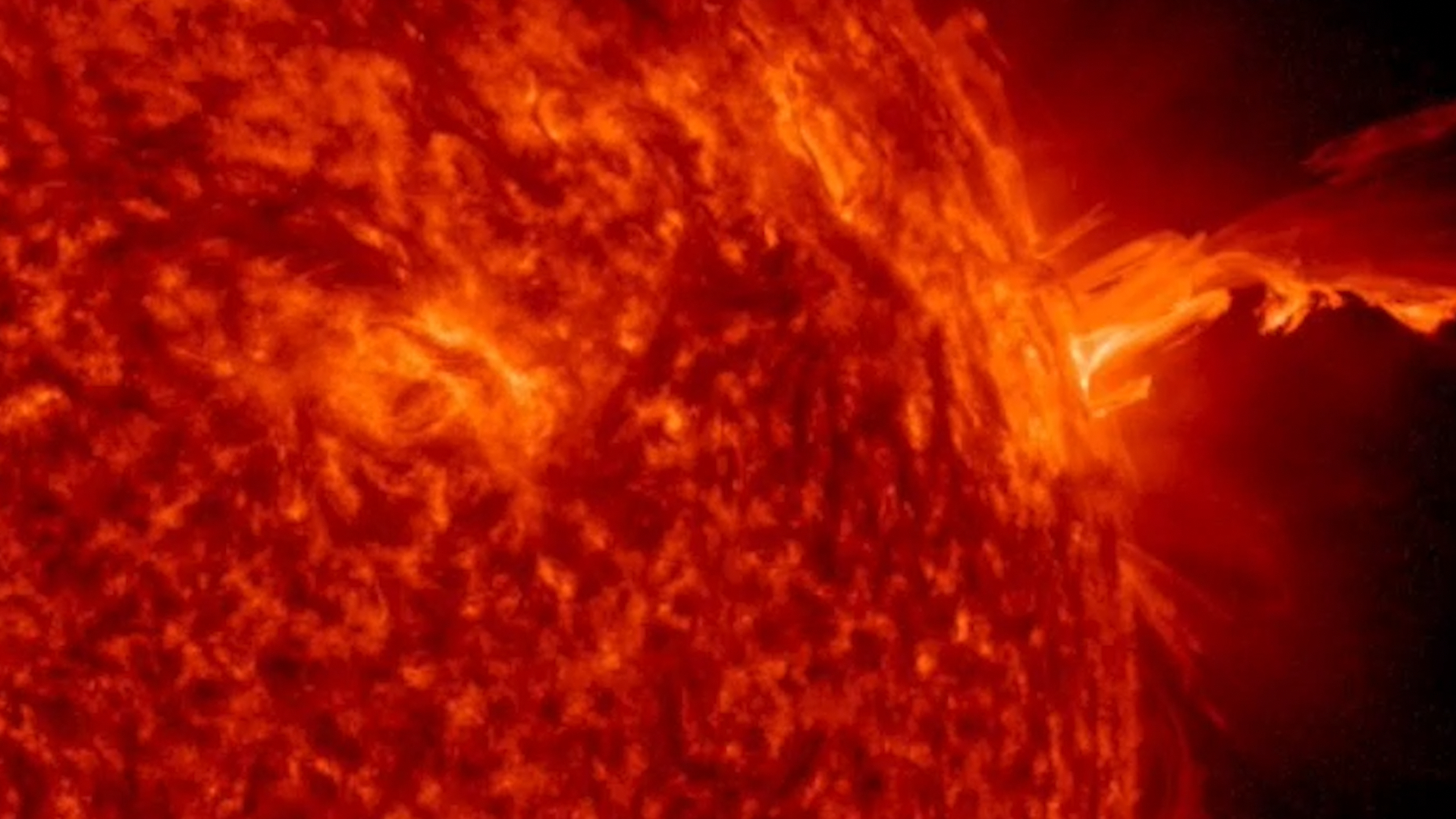Sun erupts with powerful solar flare from departing sunspot
The X1.1-class solar storm likely won't hit Earth as the sunspot is turning away.
An active sunspot on the sun that's turning away from Earth unleashed a powerful parting shot as it moved out of view on Saturday (April 30).
The sunspot AR2994, short for Active Region 2994, fired off a massive solar flare that registered as an X1.1-class solar storm. (X-class solar flares are the most powerful explosions on the sun.) NASA's Solar Dynamics Observatory captured stunning video of the solar flare in different wavelengths of light.
"Even with the sunspot completely hidden behind the sun's northwestern limb, the explosion still produced enough radiation for a strong shortwave radio blackout over the mid-Atlantic Ocean and much of Europe," astronomer Tony Phillips wrote on his website Spaceweather.com, which tracks solar flares. It lasted about an hour, he added.
The solar storm began at 9:37 a.m. EDT (1337 GMT) and reached peak strength 10 minutes later, according a NOAA alert from the Space Weather Prediction Group. The flare occurred ahead of a partial solar eclipse on Saturday, the first solar eclipse of 2022. The moon was expected to block out part of the sun for observers in parts of South America, the southern Pacific Ocean and Antarctica. Here's what time the solar eclipse of April 30 begins.
Related: The sun's wrath: Worst solar storms in history

The solar eruption almost certainly fired off an intense coronal mass ejection, or CME, of charged particles, Phillips wrote. But because the flare came from a sunspot hidden from direct view from Earth, it likely won't hit Earth, he added.
Solar storms that erupt from the sun come in different strengths, or classes, used by scientists to determine their severity. The weakest solar flares are A-class, B-class and C-class events, with the more powerful M-class storms strong enough to amplify Earth's northern lights when they hit our planet.
Get the Space.com Newsletter
Breaking space news, the latest updates on rocket launches, skywatching events and more!
X-class solar flares the strongest eruptions the sun experiences. When aimed directly at Earth, the most powerful X-class storms can pose a risk to satellites and astronauts, as well as interfere with power stations and radio signals on the surface. Each class of solar flare has nine divisions of intensity with the exception of X-flares. The biggest known X-flare was in 2003 and reached X28 before it overwhelmed the sensors monitoring it.
The sun has an 11-year space weather cycle, with the current cycle known as Solar Cycle 25 (it began in 2019). The sun is currently in an increasingly active phase of the cycle. It is being monitored by NASA's Solar Dynamics Observatory, the joint U.S.-European Solar and Heliospheric Observatory (SOHO) and other spacecraft.
Email Tariq Malik at tmalik@space.com or follow him @tariqjmalik. Follow us @Spacedotcom, Facebook and Instagram.
Join our Space Forums to keep talking space on the latest missions, night sky and more! And if you have a news tip, correction or comment, let us know at: community@space.com.

Tariq is the Editor-in-Chief of Space.com and joined the team in 2001, first as an intern and staff writer, and later as an editor. He covers human spaceflight, exploration and space science, as well as skywatching and entertainment. He became Space.com's Managing Editor in 2009 and Editor-in-Chief in 2019. Before joining Space.com, Tariq was a staff reporter for The Los Angeles Times covering education and city beats in La Habra, Fullerton and Huntington Beach. In October 2022, Tariq received the Harry Kolcum Award for excellence in space reporting from the National Space Club Florida Committee. He is also an Eagle Scout (yes, he has the Space Exploration merit badge) and went to Space Camp four times as a kid and a fifth time as an adult. He has journalism degrees from the University of Southern California and New York University. You can find Tariq at Space.com and as the co-host to the This Week In Space podcast with space historian Rod Pyle on the TWiT network. To see his latest project, you can follow Tariq on Twitter @tariqjmalik.









